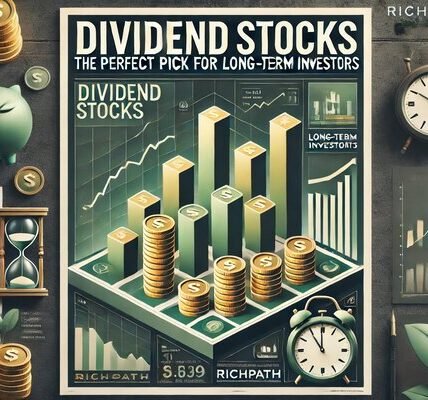Nifty 50 vs Sensex Returns Comparison: A Deep-Dive Analysis

When it comes to investing in the Indian stock market, two indices dominate the conversation: the Nifty 50 and the Sensex. These indices serve as benchmarks that reflect the performance of the largest and most actively traded companies in India. For investors, understanding Nifty 50 returns and Sensex returns is crucial to making informed decisions. This article will explore the history, composition, calculation methods, and long-term performance of both indices. We’ll also analyze how each has performed across different market cycles and which may be better suited for your portfolio.
Understanding the Nifty 50
What is the Nifty 50?
The Nifty 50 is a flagship stock market index introduced by the National Stock Exchange (NSE) in 1996. It comprises 50 of the largest and most liquid stocks listed on the NSE. Representing various sectors of the Indian economy, the Nifty 50 is widely regarded as a true reflection of market sentiment.
How is the Nifty 50 Calculated?
The Nifty 50 returns are based on the free-float market capitalization method. This means that only the shares available for public trading are considered in the calculation. The formula is:
Index Value = (Current Market Cap / Base Market Cap) × 1000
The base year for the Nifty 50 is 1995, with a base value of 1000.
Sector Composition of the Nifty 50
The Nifty 50 includes companies from sectors like:
- Financial Services
- Information Technology
- Energy
- Consumer Goods
- Pharmaceuticals
- Automobiles
This diversified exposure helps reduce sector-specific risks, which is one reason why many investors track Nifty 50 returns closely.
Understanding the Sensex
What is the Sensex?
The Sensex, short for the Sensitive Index, is the oldest stock market index in India, introduced by the Bombay Stock Exchange (BSE) in 1986. It comprises 30 of the largest and most actively traded stocks on the BSE.
How is the Sensex Calculated?
Like the Nifty 50, the Sensex returns are calculated using the free-float market capitalization method. The base year for the Sensex is 1978–79, and the base value is 100.
Sector Composition of the Sensex
The Sensex represents companies from sectors like:
- Banking
- IT
- Energy
- FMCG
- Manufacturing
- Healthcare
Although it has fewer stocks than the Nifty 50, the Sensex still covers a large portion of the Indian economy, making Sensex returns an important market barometer.
Historical Performance of Nifty 50 vs Sensex
Long-Term Growth Trends
Historically, both indices have delivered strong returns over the long term. From inception until now:
- Nifty 50 returns have averaged around 11–12% CAGR (compounded annual growth rate) over the last 25 years.
- Sensex returns have averaged around 12–13% CAGR over the last 40 years.
These numbers show that long-term equity investment in either index can significantly outpace inflation and fixed-income returns.
Decade-by-Decade Analysis
- 1990s: Sensex dominated due to the tech and banking boom in its constituents.
- 2000s: Nifty 50 performed better, thanks to broader diversification.
- 2010s: Both indices grew steadily, with Nifty 50 marginally outperforming in certain years.
Volatility Comparison
Standard Deviation and Beta
Volatility measures like standard deviation and beta show that:
- Nifty 50 has slightly lower volatility due to its broader stock base.
- Sensex can be more volatile in the short term because it has fewer companies, and movements in a handful of stocks can sway the index significantly.
Dividend Yields of Nifty 50 vs Sensex
Both indices offer dividend yields in the range of 1–1.5%. These yields, when reinvested, contribute to total Nifty returns and Sensex returns over time.
Impact of Sector Weights
Financial Services Dominance
In both indices, financial services have the highest weight, often exceeding 35%. This means that banking and financial performance can heavily influence both Nifty returns and Sensex returns.
Crisis Performance: 2008, 2020, and Beyond
Global Financial Crisis (2008)
- Nifty dropped nearly 50% from its peak.
- Sensex saw a similar fall.
COVID-19 Crash (2020)
- Nifty fell around 38% from January to March.
- Sensex dropped around 39%.
In both cases, recovery was strong, demonstrating the resilience of large-cap Indian companies.
Which Index is Better for Investors?
For Passive Investors
If you prefer broader exposure, Nifty returns may suit you better.
For Long-Term Investors
Both indices have delivered similar long-term returns, so the choice may depend on your preference for exchange (NSE vs BSE) and the index fund or ETF options available.
Tax Implications on Nifty and Sensex Returns
Capital gains from investing in Nifty or Sensex-based ETFs are taxed similarly:
- Short-Term Capital Gains (STCG): 15% if held for less than 1 year.
- Long-Term Capital Gains (LTCG): 10% on gains above ₹1 lakh if held for more than 1 year.
Role of Nifty and Sensex in Portfolio Diversification
Including either or both indices in your portfolio ensures exposure to top companies in India, reducing unsystematic risk.
Key Differences Between Nifty and Sensex
| Feature | Nifty | Sensex |
|---|---|---|
| Number of Stocks | 50 | 30 |
| Exchange | NSE | BSE |
| Base Year | 1995 | 1978–79 |
| Base Value | 1000 | 100 |
| Diversification | Higher | Moderate |
Conclusion
Both nifty 50 returns and the Sensex returns have rewarded long-term investors. While their composition and calculation methods are similar, the nifty 50 offers slightly broader diversification, whereas the Sensex has historical depth. Ultimately, choosing between them depends on your investment strategy, risk tolerance, and the products available through your preferred exchange.
If you stay invested and avoid panic-selling during market downturns, both indices can be powerful tools for wealth creation over time.
If you’re ready to explore more such financial tools, visit Richpath.in for expert insights, wealth-building ideas, and simple strategies for smart investing.
Read more –
Top 5 Mutual Funds for Long-Term Growth in India in 2025








